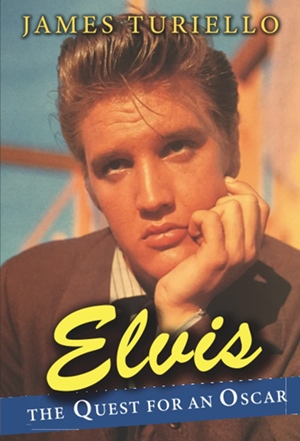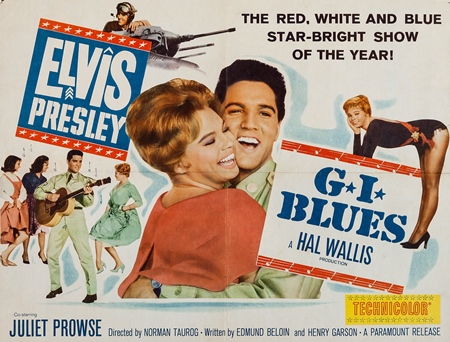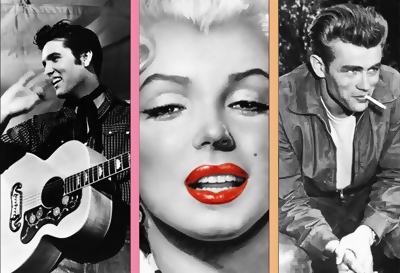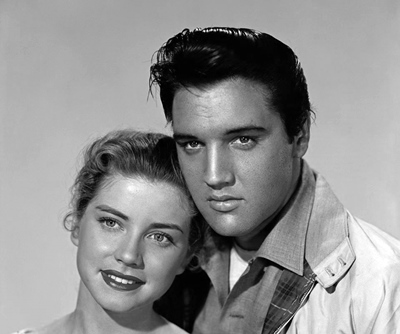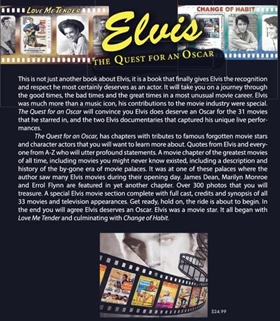 |
 |

Reviewed by Nigel Patterson , April 2022 Many will find it surprising that someone could write more than 500 pages detailing the case why Elvis deserves to receive an Honorary Academy Award, but author James Turiello has achieved this with his latest book. Elvis: The Quest For An Oscar is written in three parts:
There is a somewhat curious start to the book when the author states:
A major similarity is that they both are / were surviving twins (Turiello claims they were both one half of “identical” twins – my understanding is that the jury is still out on this issue). The issue of similarities between the two is continued later in the book in a section, Elvis the Jim Song (Just Tell Her Jim Said Hello), which includes several pages of comparative photos of the author and Elvis. The core premise due to the body of his film work, Elvis is deserving of an Honorary Academy Award, is exemplified by this passage:
For most of Elvis’ films Turiello provides only a relatively brief evaluation, a key issue being reporting on their success at the box office. The author does highlight several pertinent issues about Hollywood. When discussing Elvis' first post-Army role, G.I. Blues, Turiello observes:
About Fun in Acapulco and the award-winning documentary film, Elvis on Tour, Turiello states:
The author comments that during the period 1962 to 1969, Elvis was the busiest actor in Hollywood. He makes a point that the names of stars who worked with Elvis is astounding mainly because there is no actor before Elvis or after who can make that claim. This claim is contentious as most big-name actors worked with many other stars during their careers.
Turiello also draws attention to the fact that many other actors worthy an Oscar have missed out on the award. In particular, he details the bodies of work of James Dean, Errol Flynn, and Marilyn Monroe. It should be noted that Turiello has written similarly titled books to his Elvis release, about these three actors. Throughout Elvis: A Quest For An Oscar there are many moments that surprise and elicit interest. Turiello’s discussion of movie theaters is illuminating as is the information he provides about the relevance of Washington Heights in New York to Elvis' film career, while the chapter, The Movie Factory, offers a good overview of Elvis' film career. Some readers may like to investigate September Song from the 1938 Broadway musical, Knickerbocker Holiday. It was later recorded by artists such as Frank Sinatra, Bing Crosby, Nat King Cole, Mario Lanza, Ella Fitzgerald, and Andy Williams. James Turiello indicates the song is based on a metaphor comparing one year to a person’s life from birth to death – he suggests listening to it in the context of Elvis’ life has a particular resonance. The narrative element of the book is complemented by hundreds of routine black and white images. As the paper used for the book (print on demand) is uncoated stock, some of the images are dark or muted.
While I enjoyed reading Elvis: The Quest For An Oscar, I do not believe the author sufficiently makes his case. The book would have benefited from greater examination of each of Elvis' thirty-one narrative films to draw out the breadth of his film canon. The analysis of most of Elvis' films is too brief. Elvis’ final two (documentary) films, Elvis That’s The Way It Is and Elvis On Tour are covered in a short chapter. Rightly, King Creole receives its own chapter. Several other individual films and Elvis' final group of films arguably also deserve chapter treatment. Jailhouse Rock, Wild In The Country, and Blue Hawaii each offer the opportunity for strong film critique, and as a group, Live A Little Love A Little, Charro, The Trouble With Girls, and Change of Habit, represent an 'against type' group, the intent of which was to reinvent (modernise) Elvis' film career, albeit too late, as both Elvis and his fans had lost interest.
Turiello should also have addressed the erroneous, but commonly held view, that Elvis' body of film work was homogenous, and formula driven. The Elvis film canon is in fact, eclectic, spanning a number of genres:
Highlighting, in depth and with a stronger “film analysis” critique, the breadth of genre offered by Elvis' film legacy would have added gravitas to the author’s argument. The middle section of the book is unnecessary and as it is not about Elvis, represents a padding which takes away from what should be the reader's main focus - why Elvis deserves to be awarded an Honorary Academy Award. Similarly, the section, Elvis stamps, trading cards and the 'Flying Elvis’, while a reflection of Elvis’ socio-cultural impact, has nothing to do with Elvis’ time making films in Hollywood. The book would also have benefited from inclusion of a bibliography and detailed references/citations.
Verdict: Elvis: The Quest For An Oscar is an entertaining and interesting read. However, for the reasons outlined above, it is my view that it fails to present a cogent enough case in support of the author's objective to establish that Elvis deserves an Academy Award in recognition of his services to the motion picture industry. Note: The book is definitely available as a softcover. However, links on Amazon USA and Amazon UK to supposed hardback and Kindle editions bring up the author’s James Dean and Errol Flynn Quest For An Oscar books. Review by Nigel Patterson.
|
|

